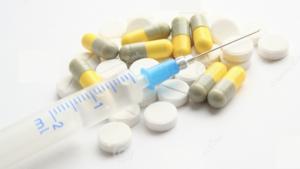
From the patient/caregiver perspective, there are three observations to be made about treating pityriasis rubra pilaris:
- Each PRP journey is unique.
- You are not alone. We are on this journey together. Others have traveled the same road. There is a global PRP community
- What works for one doesn’t work for all. This is the mantra of the PRP global community. Consider this caveat: If it works for one, then there’s hope for me.
Treating PRP focuses on treatment options (prescription drugs and topicals) as well as managing our expectations. We all learn early in our PRP journeys that the efficacy of treatment is a roll of the dice. We also learn that not all dermatologists are created equal. Not all dermatologists are PRP savvy. We want patients and caregivers to have a basic understanding of the options and confident in your ability to ask your dermatologist important questions.
Treatment options for PRP
There is no cure for PRP. Therefore, the goal of treatment is to relieve the symptoms. According to the National Organization of Rare Diseases: “PRP tends to follow a natural waxing and waning course, with episodes in which there is periodic worsening (exacerbation) or cessation (remission) of symptoms.” Source: NORD PRP Report
From the PRP perspective, there are two major objectives in the treatment of pityriasis rubra pilaris:
- relieving symptoms as they present
- achieving long-term remission, if possible
The mantra heard within the PRP community is simple but deafening: “What works for one doesn’t work for all.”
 Oral retinoids are derivatives of vitamin A that slow the growth and shedding of skin cells.
Oral retinoids are derivatives of vitamin A that slow the growth and shedding of skin cells.
Immunosuppressants to slow down the body’s immune system. Often used when oral retinoids are ineffective.
Biologicals with generally fewer side effects, targeted to reduce inflammation. These are injectable or intravenous (IV) medications that affect the immune system. While the Federal Dug Administration has yet to approve any of the following biologicals for the treatment of PRP, each has been approved for disorders and symptoms common to PRP. CLICK HERE to access the The FIRST APPROVAL BY FDA list.
- adalimumab/Humira
- brodalumab/Silliq
- certolizumab/Cimzia
- dupilmab/Dupixent
- etanercept/Enbrel
- golimumab/®Simponi
- guselkumab/Tremfya®
- infliximab/Remicade®
- ixekizumab/Taltz®
- risankizumab/Skyrizi®
- secukinumab/Cosentyx®
- ustekinumab/Stelara®
- upadacitinib/Rinvoq®
Other pharmaceuticals
Additional therapies
Prescription topicals
OTHER CONSIDERATIONS
- No meds at all is an option taken by PRP patients concerned with the negative impact of side effects.
- Lab tests to monitor the effects of medications on the body and efficient management of drug side effects are important follow-up issues that will concern PRP patients and caregiver who is under a doctor’s care.
- Access to treatment options varies based on age, geography, cost and FDA approval.
COMPLIMENTARY HEALTH OPTIONS
- What are the issues related to a Complementary Health approach?
- Things to know when selecting a Complementary Health option
- What do I need to know about acupuncture?
FINDING HEALTHCARE RESOURCES
OTHER ISSUES RELATED TO THE TREATMENT OF PRP
- Finding and evaluating online resources
- The challenges of step therapy?
- Laddered Treatment for Pityriasis Rubra Pilaris (Dermatology Times)
- The challenges we face treating PRP
- Testing your liver — Food for thought
- The impact of comorbidities on the treatment of PRP
- Mental wellness and the impact on treating PRP
- Issues related to the cost of healthcare — Horror Stories
- Help with travel costs
